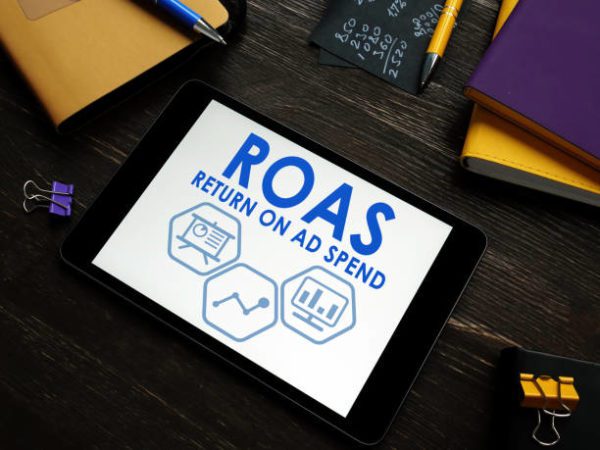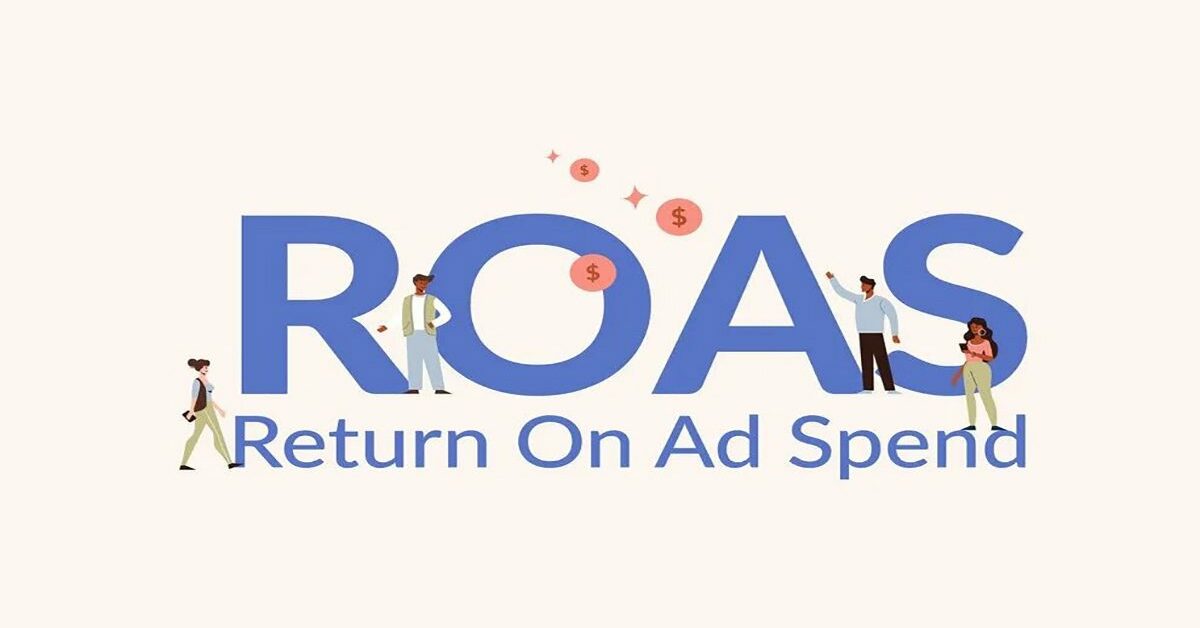Return On Ad Spend (ROAS) refers to a marketing metric that is used to measure the success and efficacy of a digital advertising campaign. It helps digital marketers and online businesses evaluate which methods are working and how they can improve future advertising efforts. Digital marketers and online businesses deal with a lot of data and are constantly trying to improve important metrics like CTR, CPC, among others. However, return on Ad Spend often focuses more on the bigger picture. It offers greater insight into not only what’s leading to conversions, but also the amount of revenue your conversions are generating. Overall, return on ad spend lets you know if you are running a successful marketing campaign.
In this article, we are going to focus on what we mean by ROAS, why it’s important, how to calculate return on ad spend(ROAS), and strategies you can use in getting the best ROAS.
What is Return On Ad Spend (ROAS)

ROAS is a metric that digital marketers and online businesses use to track the success and financial return of an advertising campaign, ad group, and digital advertising strategy. It shows how much money you are making for every dollar you spend on ads.
If you run a successful advertising campaign, you are expected to make more than what you spent on the campaign. The higher your ROAS, the more you’re getting out of your advertising money. Using and measuring this metric can help companies improve their ad strategies and monetary returns.
ROAS is important because it provides you with a detailed understanding of whether or not a campaign is paying off. For example, a business spends $3,000 on an online advertising campaign in a single month. In this month, the campaign resulted in revenue of $15,000 Therefore, the ROAS is a ratio of 5 to 1 as $15,000 divided by $3,000 = $5. This means that 5 dollars are being made for every 1dollar spent.
What’s the difference between ROI and ROAS?
Return on ad spend (ROAS) is similar to ROI(return on investment). Where ROAS only looks at the monetary return from a specific ad campaign, ROI on the other hand measures the return of a larger investment. ROI is used to measure the return on a marketing campaign that includes ads as well as other marketing expenses, e.g. sales gotten from social media marketing or email marketing.
ROI helps calculate how much your company makes from advertising and other channels after expenses, which includes operational costs, and more.
Calculating ROI is more complicated than ROAS because businesses will need to factor in things like costs of salary, employment tax, office space, etc. to get an accurate picture of the investment.
Note that the more effective your ad campaign is, the more revenue you’ll earn from each dollar spent on the campaign.
How To Calculate Return on Ad Spend
Calculating ROAS is simply dividing your company’s revenue by the amount you spent on advertising during a specific period, or by dividing your total conversion by your advertising costs.
Conversion value is the amount of revenue your business earns from a given conversion. ROAS equals total revenue/total ad spend or advertising cost.
For example, if it costs you $100 in ad spend to sell one unit of a $1000 product, your ROAS is 10. Meaning for each dollar you spend on advertising, you earn $10 back.
Your ROAS calculation may be broader or more specific than the above, depending on the data that’s available to you. You can figure out your brand’s overall ROAS by comparing your total revenue with your total ad spend across all channels and campaigns.
Furthermore, you can also do a ROAS calculation to see the effectiveness of a specific campaign. For example, you could compare the revenue of a particular product with the money you spent advertising it.
Tips for Calculating ROAS
- When calculating ROAS, you need to know how much you made from the ad campaigns you’re looking at “conversion value”. Ideally, this is measured with the total ad cost, but it may also be worth doing the calculation with profits as well by subtracting out the base production costs for making the product.
- The cost for an advertising campaign isn’t just the cost for the specific ad. Other costs include vendor and partner costs. You are likely to have a digital marketer set up the ad for you or someone to help you run the campaign. You need to factor in the cost you pay these people when you are calculating your ROAS.
- If you’re working with bloggers and other advertising companies that take an affiliate cut, you will also need to add the amount you are paying to these companies and add them to the cost
- Make sure you add the cost for the number of impressions the ad gets in your advertising cost.
Including all these factors would allow you to get the full ROAS on your business.
Why Your Business Should Focus On Ad Spend
- Calculating Return on Ad Spends helps businesses measure the effectiveness and financial return of their advertising campaigns. The higher your ROAS, the more you’re getting out of your advertising money.
- Return on ad spending help determines whether a specific advertising campaign was profitable or not. Therefore, if you want to have a successful campaign in the future, you must leverage this metric.
- Tracking your ROAS for different ad campaigns can help you see what works for your target audience and which ones do not. Knowing this will help you generate more revenue for your business.
- From the last point, if certain ad campaigns aren’t paying off or certain cost-per-click ads aren’t getting the conversions you need, you can readjust your future budget to get better performance.
- If a specific keyword or advertising campaign has an extra high ROAS, you can create more content around that topic. Take a good thing and run with it.
How To Improve ROAS
1. Make sure you are tracking your ROAS accurately
If you are not tracking your ROAS accurately, your campaign might not do well. Therefore, you need to review the data you’re using to calculate the metric. Did you consider all the costs of your advertising? Note that when calculating ROAS, you must only consider advertising costs and not other costs like order fulfilment as this will make your ROAS lower than it is.
2. Make use of Negative Keywords
Using negative keywords can also help improve your ROAS. If you make use of negative keywords, your ads will not appear in searches that feature those keywords. Although, these keywords, while similar to your targeted keywords, tend to go outside the scope of your business, products, or services. The average Google Ads account wastes about 76% of its budget targeting the wrong keywords. This is where negative keywords come in
3. Reduce labour costs
You can make a good ROAS by reducing your labour cost. These are the people you work with when creating your ads. For example, the digital marketing expert, the graphics designer, the video editor, and other important people that help in making the campaign a success. You can do some of these things on your own to save necessary costs
4. Optimize Your landing pages for speed and conversion
Your landing page, or where your ads send users when they click needs to be optimized for speed and easy conversion. Landing pages that are jam-packed with a lot of information usually end up as a turn-off to most users. Furthermore, the landing page might end up with an unfriendly user experience which affects valuable leads and sales. If you want your landing pages to convert users to loyal customers, you need to make them both mobile and desktop friendly.
5. Run A/B tests
Use automated testing to find out what works and what does not work for your goals, and use those insights to drop ads that are not generating results.
What Makes a Good ROAS?
There’s no straight answer to this question. This is because what is considered a good ROAS depends entirely on the type of business, campaign or industry. However, an acceptable ROAS is influenced by profit margins, operating expenses, and the overall health of the business.
A common rule of thumb is that a successful ROAS will indicate a ratio of 4:1. That is $4 revenue to $1 in ad spend. However, this is just a common benchmark as some businesses might need a ROAS of 10:1 to stay profitable, while others can do well with just 3:1.
A business can gauge its ROAS goal when it has a defined budget and a firm handle on its profit margins. A large margin will mean that the business can survive a low ROAS while smaller margins mean that a business must maintain low advertising costs to stay profitable.
Conclusion
ROAS is an important metric that should not be ignored by digital marketers and online businesses if they want to run a successful ad campaign. This article has tried explaining the meaning of ROAS, why it’s important, how to calculate it, and strategies you can use in getting the best ROAS.







